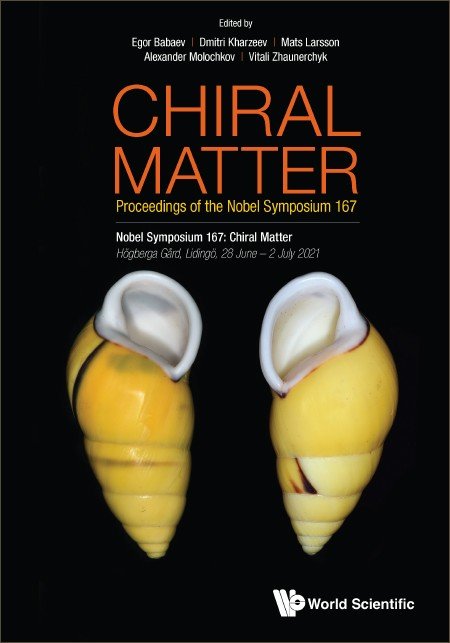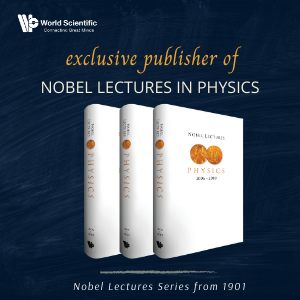System Upgrade on Tue, May 28th, 2024 at 2am (EDT)
Existing users will be able to log into the site and access content. However, E-commerce and registration of new users may not be available for up to 12 hours.For online purchase, please visit us again. Contact us at customercare@wspc.com for any enquiries.
A geometric figure has chirality, or handedness, if its mirror image cannot be brought to coincide with itself. The concept of chirality was instrumental in establishing the tetrahedral valences of the carbon atom, and has continued to play a key role in chemistry and molecular biology ever since.
The fact that living organisms use only one of two mirror isomers of such molecules as amino acids and sugars, that is, the question of the origin of homochirality of the molecular basis of life, remains an unsolved problem of the same dignity as the origin of dark matter and dark energy.
The increasing importance of chirality and topology in condensed matter physics and chemistry, and the production of new states of matter in heavy-ion collisions, have brought the concept of chirality into physics and cosmology in a tangible way while at the same time expanded the physics/chemistry interface. The book is the first to address all aspects of chirality in a single volume.
Sample Chapter(s)
Preface
Chirality: A Scientific Leitmotif
Contents:
- Chirality: A Scientific Leitmotif (Frank Wilczek)
- Chirality in Astrophysics (Axel Brandenburg)
- Using Ultra-Relativistic Heavy-Ion Collisions to Search for the Chiral Magnetic Effect and Local Parity Violation (Helen Caines)
- Chiral Magnetic Effect in Heavy Ion Collisions and Beyond (Dmitri E Kharzeev)
- Nonperturbative Casimir Effects: Vacuum Structure, Confinement, and Chiral Symmetry Breaking (A V Molochkov)
- Emergent Electromagnetic Phenomena in Spin Chiral Matter (Yoshinori Tokura)
- Dynamics of Chiral Fermions in Condensed Matter Systems (Qiang Li)
- The Chiral Anomaly in Dirac and Weyl Semimetals (N Phuan Ong)
- Chiral "Graviton" and Fractional Quantum Hall Effect (Dung Xuan Nguyen and Dam Thanh Son)
- Topology and Chirality (C Felser and J Gooth)
- Asymmetric Autocatalysis and the Elucidation of the Origin of Homochirality (Kenso Soai)
- On Chirality, Symmetry, Entropy and Isotopes (R A Zubarev)
- The Chiral-Induced Spin Selectivity Effect (R Naaman)
- Ultrafast Chiral Dynamics and Geometric Fields in Chiral Molecules (Olga Smirnova)
- High Sensitivity Chiral Detection in the Gas Phase via Microwave Spectroscopy and the Possible Frontier of Ultracold Chiral Molecules (John M Doyle, Zack D Lasner and Benjamin L Augenbraun)
- Parity Violation in Chiral Molecules: From Theory towards Spectroscopic Experiment and the Evolution of Biomolecular Homochirality (M Quack, G Seyfang and G Wichmann)
Readership: Researchers across all physics domains, as well as interdisciplinary fields at the interface of chemistry, biology and physics.




